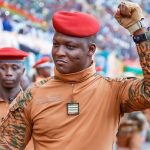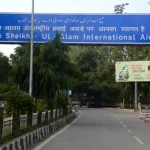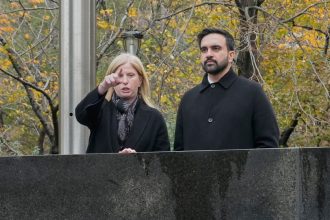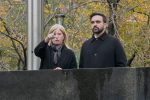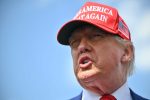It was a warm and ceremonial welcome in Riyadh on Tuesday as former President Donald Trump stepped off the plane and back onto the world stage, kicking off the first international trip of his second term with a familiar stop—Saudi Arabia.
The visit marks a deeply symbolic moment. Saudi Crown Prince Mohammed bin Salman, now firmly entrenched as the kingdom’s de facto ruler, greeted Trump personally on the tarmac. Their handshake was more than just formal—it was a signal of continuity, connection, and perhaps, renewed ambition.
Trump’s four-day tour of the Middle East—taking him through Saudi Arabia, Qatar, and the UAE—carries the weight of high expectations. The stakes are enormous: taming tensions with Iran, seeking solutions to the tragic war in Gaza, managing global oil prices, and strengthening regional alliances. These are the big headlines. But beneath them lies a more personal narrative—a leader revisiting a region where his diplomatic blueprint first took shape.
“Last time I went to Saudi Arabia, they put up $450 million,” Trump remarked earlier this year, referencing previous investments from the kingdom. Now, with Saudi Arabia pledging $600 billion more over the next four years, his return isn’t just political—it’s personal and economic.
The trip isn’t only about geopolitics. Trump will headline a high-powered U.S.-Saudi investment summit in Riyadh, drawing some of the world’s most influential business minds—Nvidia’s Jensen Huang, BlackRock’s Larry Fink, Uber’s Dara Khosrowshahi, and others. These names represent more than brands—they symbolize the kind of economic vision Trump hopes to link with diplomatic outreach.
White House Press Secretary Karoline Leavitt spoke with emotion about the president’s plans. “This trip ultimately highlights how we stand on the brink of a golden age for both America and the Middle East,” she said, underlining the mission of unity, stability, and mutual respect.
Trump’s original Abraham Accords shifted the dynamic in the region. Now, he hopes to build on that legacy—pushing for deeper peace and broader cooperation. This trip, officials say, is about making that dream a reality.
Joining him are key members of his cabinet: Secretary of State Marco Rubio and Defense Secretary Pete Hegseth. Their stops will include high-level meetings—and a heartfelt visit with U.S. troops stationed at the Qatar airbase.
Interestingly, Trump won’t be stopping in Israel this time, a notable shift from his first term itinerary. But his message remains consistent: peace through strength, opportunity through partnership.
And in a rare personal touch, it’s been revealed that Qatar’s royal family will donate a private jumbo jet for Trump’s use, eventually destined to become a centerpiece in his presidential library.
This trip is more than just a diplomatic tour—it’s a return to the region where Trump first laid the foundation of his foreign policy legacy. And now, with global tensions high and economies interwoven more than ever, the world watches to see how this second act unfolds.

